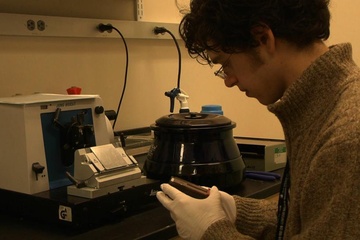The competition for best House has always been a tumultuous one. Upperclassman housing at Harvard often means more than just which Georgian-style building one lives in for three years; the House takes on the role of a home, to which students swear an absolute and undying allegiance. Yet, undergrads have no control over their initial House assignment. Since 1996, assignments of blocking groups have been completely random. Before that, groups of students listed their top three choices and were entered into a lottery to determine the order in which their requests would be honored. This system however, was amended in favor of the more balanced student populations that a completely randomized lottery could provide. This new method has made it difficult to pinpoint exactly what it means to “win the lottery.” Alternatively, the prevailing sentiment when it comes to “losing the lottery” is still clear: banishment to the Quad or Winthrop House—last year’s lowest rated House on The Crimson’s blog. Luckily, for those unhappy with their placement, there is a way out: the opportunity to transfer from one House to another.
FILLING THE FORMS
This year, Tuesday, Feb. 15, is the deadline for applying to transfer. The process of filling out the application is very simple and straightforward: qualifying upperclassmen (a student who has lived in her assigned House for at least two terms, or one term for a transfer student) may download the application from the Office of Student Life (OSL) website and rank the Houses into which they would like to transfer. They submit this form to their House Administrator, who signs this form and then sends it to the OSL. The OSL then assigns a random number to each application.
According to Pforzheimer House Administrator Suzanne “Sue” M. Watts, there are no advantages. “Everybody goes in even,” she says. The only preference is given to students who have not transferred previously. After that it becomes all about the numbers. The OSL takes into account the current class populations in each house and then attempts to fit students into their top choices in such a way that class sizes and gender proportions are balanced. For example, Lowell House currently has a lopsided population with a sophomore class much larger than the junior and senior classes: the Harvard College Facebook lists 160 sophomores, 101 juniors, and 122 seniors residing there. This round of transfers allows administrators to bring more balance to the population. While this process proves beneficial for any rising seniors wishing to transfer to Lowell, hopeful rising juniors may be put at a disadvantage. Two other opportunities to apply to transfer exist: one in the summer and one in December.
However, these transfers can’t accommodate a large number of students, though administrators strive to meet all requests. Watts says, “You never want to deny anybody to come into your House. We do our best to take in everyone, but we’re limited by the House’s population.”
A DIFFICULT CHOICE
Though the form may be straightforward, before the applicant signs her name and agrees to break off all affiliation with her current House if transferred to one of her choices, a lot of thought goes into the decision. When the choice often involves leaving friends, students considering the move turn to their mentors, including staff in the House, for advice.
Allston Burr Resident Dean Lisa M. Boes says of her conversations with students, “They’re not always sure, because in this choice you gain something and you lose something, no matter what.” She elaborates: “If you decide not to go, you still have to deal with whatever made you consider transferring. And if you go, you’ve been in the House for a year and you often come in with people, and you have to give that up.”
QUAD TO RIVER AND BACK
Students who have transferred echo Boes’ point that there are always trade-offs made when moving.
Alex H.H. Housser ’12, receives bewildered looks whenever he mentions that he switched from Adams to Pforzheimer. It may be hard to believe that someone would willingly throw away the benevolence bestowed upon him by the river gods. A rower, Housser made the decision to transfer to Pfoho at the last minute possible this past summer in order to live with his teammates. He confessed that the waiting period to find out whether his request was accepted or not was very stressful, but he says the outcome of his decision has surpassed expectations. He cites the relaxed feel of the Quad as an unforeseen advantage to living in the sometimes chaotic center of Harvard Square.
Joshua R. Wortzel ’13 agrees with this characterization of the Quad and even fondly calls it “the Shire.” However, the current Pfoho resident hopes to make the opposite move as Housser. Wortzel depends upon the M2 shuttle to reach his lab in the Longwood Medical Area and puts in much time and effort at the Harvard Community Garden. For him, a transfer to Lowell makes sense simply in terms of the convenience. “It really is the lab. I think a bunch of people in the University would empathize with that ... It’s comparable to athletes that are far from the river facilities, and it’s an aspect that’s perhaps often overlooked,” Wortzel adds.
Another interesting relocation was made by Evelyn R. Wenger ’11: from Cabot to Currier. Both Houses are equally inconvenient in terms of getting to the hub of activity and commerce in Harvard Square. Wenger’s move was inspired by personal fit. “The housing in Cabot was great, the staff was great, I just fit in really well here,” says Wenger of Currier. It may be difficult to leave one group of friends to join another, but she notes, “Friendships will survive if you’re honest and forthcoming and willing to put the effort in to make it work for everyone.”
Housser suggests, “Put a lot of thought into it. I lucked out in my decision, even though it was a spontaneous one.”




